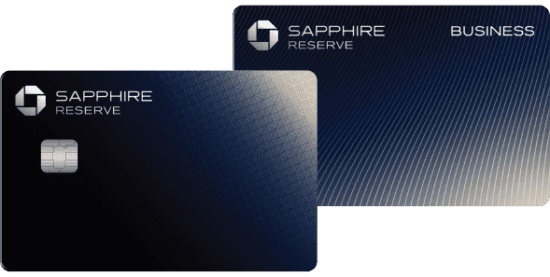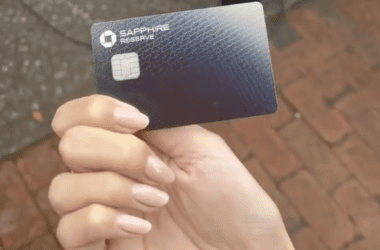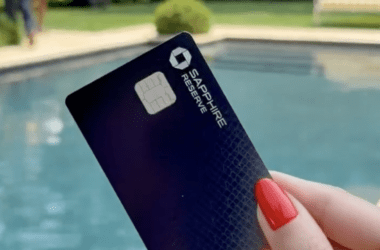Just last week, I wrote about the whole brouhaha surrounding the relaunch of the Chase Sapphire Reserve and opined why I was not necessarily jumping up in excitement. Some readers chimed in saying that Chase must not be thinking it out before launching these coupon-ish credit cards. Well, if you look at this WSJ article, it seems like they know exactly know what they’re doing, keeping the money by using a breakage strategy.
Chase Sapphire Reserve – the fees keep adding up
Financial institutions have vast reams of data and analytics to study consumer behavior. So, while it was not a great move for travel hackers, the move by Chase to pretty much copy Amex’s strategy came as no surprise.
Customers just aren’t paying attention
This article by WSJ delves into some of the dynamics. One of them being that customers simply aren’t paying attention to all these changes.
Until a reporter told him that the fee will soon rise to $795, from $550, he assumed he had been paying less than $100 a year. A brief shock, acknowledged with an expletive, gave way to acceptance.
Understanding Consumer Psuychology
There’s a famous adage in Marketing which goes like this, consumers make emotional decisions all the time. That doesn’t necessarily mean that other consumers make decisions based on logic. They’re simply able to use reasoning and rationale better to justify their “different” emotional decision.
In this case, you can see that when customers are surveyed, they justify their emotional decision by using some rationale.
The cards’ allure “can lead to behaviors that you can’t justify” based on function alone, said Derek Rucker, a marketing professor at Northwestern’s Kellogg School of Management. “That’s where the math doesn’t have to make sense,” he said.
Theoretically, the math can make sense. Chase touts the more than $2,700 in annual value on its refreshed Reserve card, including hotel and dining credits and travel perks. Amex Platinum offers similar benefits for frequent travelers.
Keeping the Money
There are enough reasons why the move makes sense for Chase. They get to collect higher fees up front (a whopping extra 45%). In return, they offer rebates that many may not end up using. That’s the key. If you look at the numbers cited in the article, they’re simply staggering.
But many perks go unredeemed. According to the latest data from the Consumer Financial Protection Bureau, cardholders earned over $40 billion in rewards in 2022, yet more than $33 billion went unclaimed—a 40% jump since before the pandemic. The average account sat on $150 in unused perks.
Navigating thru complexity
Simple is easy to use. Complexity makes things really murky. That’s the direction in which many premium credit cards are heading. Higher annual fees, in addition to a complex web of credits split across different time frames and consumers aren’t necessarily happy.
Jacob Moon, a 36-year-old investment banker in Los Angeles, didn’t mind the fee increase, but bristled at the fine print. Many perks are delivered in increments and expire monthly. For instance, Chase is advertising a $500 hotel credit as a new benefit with the Sapphire Reserve. But half of the credit must be used in the first six months of the year, and half of it in the last six months.
“For the amount I spend, I want freedom, not a schedule,” Moon said. “This card is giving me homework.”
The Pundit’s Mantra
The ‘homework’ comment really made me cackle. What’s next? Free accounting software credit with the card keep track of all the benefits? 🙂 You never know.
On a more serious note, this article clearly shows why it makes sense for an issuer from a business standpoint. However, as you can se from some of the quotes in the article, many customers are not too happy with these changes. Issuers are banking on the fact that a majority of customers will simply not pay attention, yielding sufficient breakage, meanwhile also keeping customer attrition rates low.
Travel bloggers, their readers and people in our hobby often suffer from the echo chamber effect. As this article points out, there are countless customers who simply don’t track each and every benefit and analyze things with a fine tooth comb. I won’t be surprised if other issuers simply jump on to the bandwagon and make their ‘premium’ credit cards even more coupon-ish.
In my case, I’m going to pass on this. I’ve been a Sapphire Preferred Card holder for over 5 years now and continue to keep it active. I love the way it’s structured, and most importantly, it has an annual fee of just $95.
___________________________________________________________________________________________________________________
New Credit Card Offers
Co Branded Hilton Honors Cards
- Earn 100,000 bonus points and a $100 statement credit with the Hilton Honors American Express card
- No fee for the first year, earn 130,000 bonus points with the Hilton Honors American Express Surpass card
- Earn 175,000 bonus points with the Hilton Aspire card, in addition to 1 free night certificate each year
- Earn 175,000 bonus points with the Hilton Business Card
Co-branded Delta SkyMiles cards
- No annual fee for the first year, earn 80,000 bonus miles with the Delta SkyMiles Gold American Express Card
- Earn 90,000 bonus miles with the Delta SkyMiles Platinum American Express Card
- Earn 100,000 bonus miles with the Delta SkyMiles Reserve American Express Card
- No fee for the first year, earn 90,000 bonus miles with the Delta SkyMiles Gold Business American Express Card
- Earn 100,000 bonus miles with the Delta SkyMiles Platinum Business American Express Card
- Earn 110,000 bonus miles with the Delta SkyMiles Reserve Business American Express Card
Marriott Credit Cards
- Earn 5 free nights with the Marriott Bonvoy Boundless card by Chase
- Earn 60,000 points and 1 free night with the Marriott Bonvoy Bold Card by Chase
___________________________________________________________________________________________________________________
Never miss out on the deals, news and travel industry trends. Like us on Facebook, follow us on Instagram and Twitter to keep getting the latest content!













The guy who said “this card is giving me homework’ put it rather mildly, IMHO.
It’s supposed to be a high-level card … reader the fee it certainly is – but the utter ridiculousness and indignity of funneling people into certain restaurants and hotels, and then even do semi-annual, let alone quarterly calculations, is incredible to me.
Maybe the card is geared towards those Gen-Z rich youngsters who live in restaurants and hotels, but I don’t think there are that many.
So far the CSR was good, but the prediction would be that many jump off. People in this income class don’t like this foolish child’s play, let alone homework.